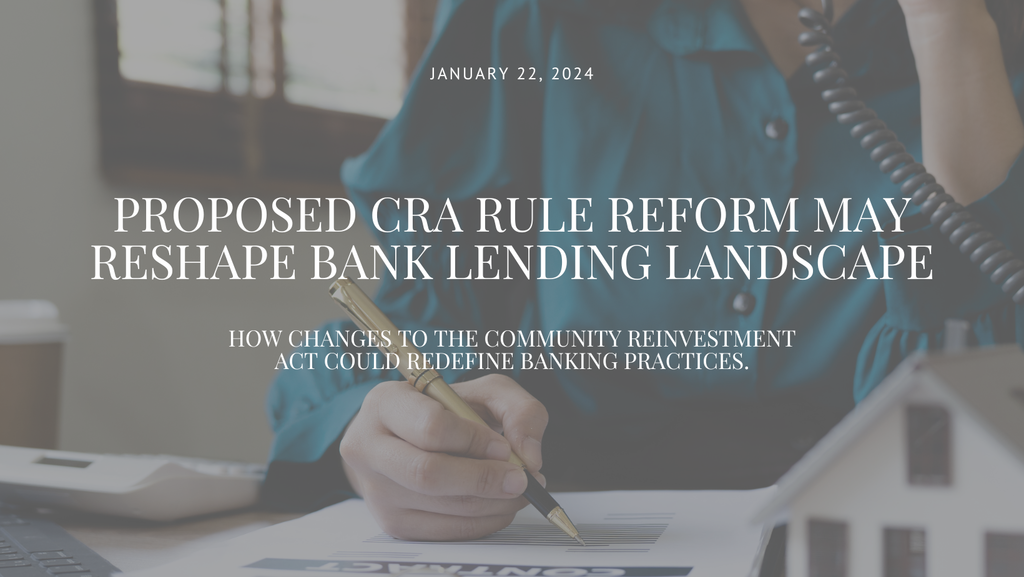Posted: January 22nd, 2024
In a potentially transformative move, federal regulators have unveiled a draft final rule to modernize the Community Reinvestment Act (CRA), a federal law enacted in 1977 to encourage banks to meet the diverse needs of borrowers, particularly in low- and moderate-income areas. The proposed changes come as a response to the rise of online and mobile banking, prompting regulators to redefine the criteria for evaluating banks' community investment.
The new rule, slated to take effect in January 2026, introduces a significant shift in the evaluation process. It expands the assessment areas for lenders to include concentrations of mortgages and small-business loans, designated as "Retail Lending Assessment Areas." This move is seen as a response to the changing landscape, acknowledging the diminished significance of physical branches in the era of digital banking.
Critics, including some banks and industry groups, initially opposed the reform, expressing concerns that it might incentivize institutions to avoid lending in low-income or sparsely populated areas to circumvent broader assessment zones. However, proponents, such as David M. Dworkin, president and CEO of the National Housing Conference, welcomed the change, emphasizing the alignment of the CRA with the 21st century.
The regulation also introduces other reforms, including tiered evaluation standards based on bank size, enhanced support for institutions focusing on minority lending and community development, and increased transparency and clearer metrics in the application of CRA regulations.
Federal Reserve Chair Jerome Powell praised the final rule for adapting to changes in the banking industry, particularly the influence of mobile and online banking, while emphasizing its role in promoting economic opportunity in underserved communities.
The American Banking Association (ABA) expressed support for the intent of the rule but reserved judgment on its implementation. ABA President Rob Nichols highlighted the association's commitment to the goals of the CRA and its long-standing support for modernizing the rules to reflect contemporary banking realities. However, he noted that the organization is still reviewing the extensive final rule, comprising nearly 1,500 pages, to assess its alignment with their criteria and to ensure compatibility with other ongoing regulatory changes.
As a mortgage broker, staying informed about these proposed CRA reforms is crucial, as they could reshape the dynamics of retail bank lending and impact the availability of credit and investment in various communities.
Empower Your Financial Journey: Reach Out for Personalized Mortgage Solutions and Future Investment Insights!
Warm regards,
Darrell Teddick
Your Mohawk Mortgage Man


